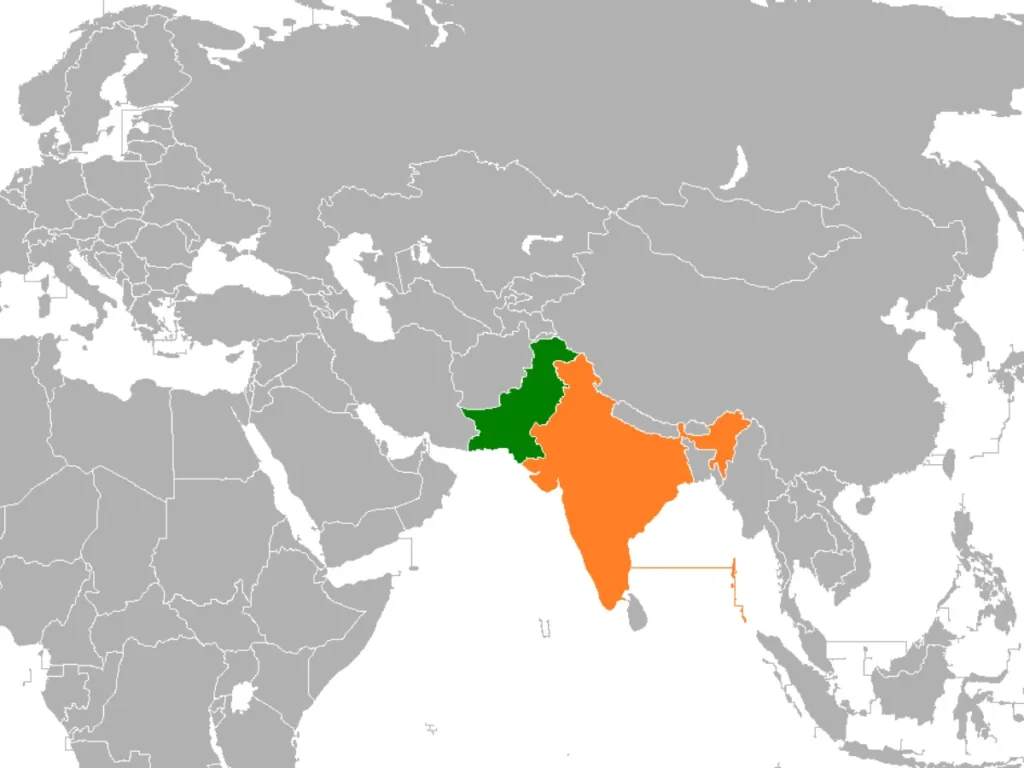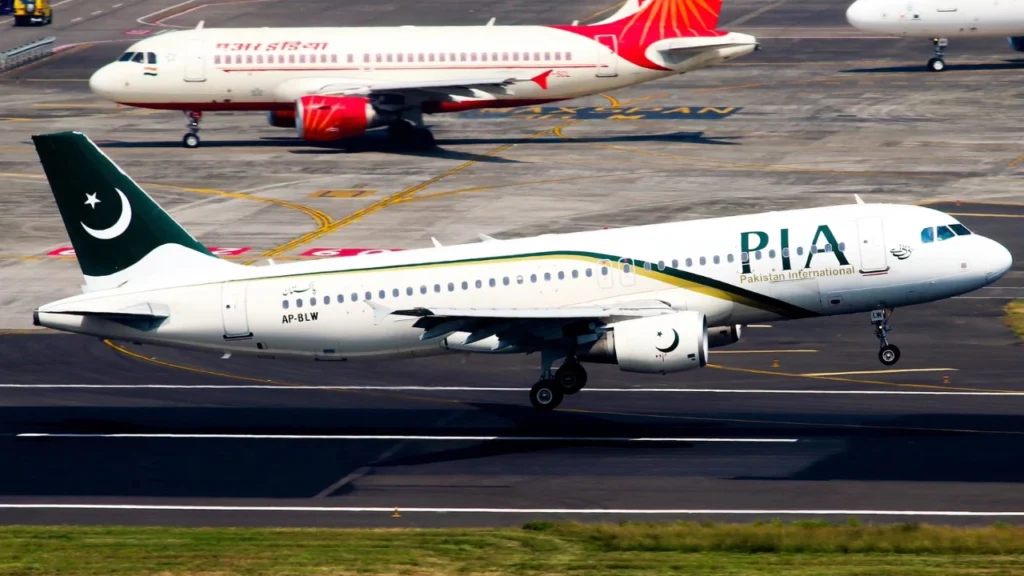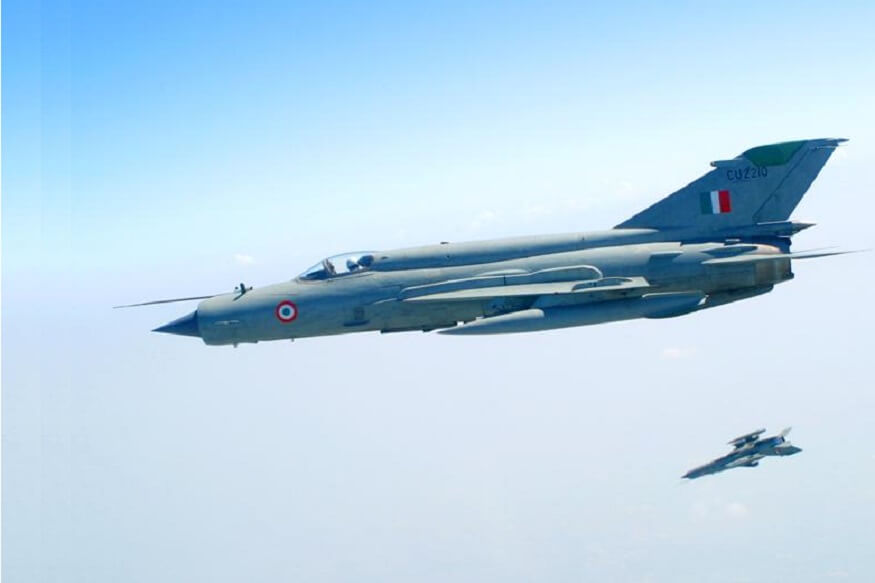
NEW DELHI- India has implemented comprehensive airspace restrictions against Pakistan following the deadly April 22 terror attack in Pahalgam, Kashmir, demonstrating the strategic value of airspace control as a geopolitical tool.
This measured response represents a calibrated alternative to military action while imposing significant economic and diplomatic costs on Pakistan.
 Photo- Wikipedia
Photo- WikipediaIndia Closes Airspace for Pakistani Planes
The Resistance Force, a known offshoot of Lashkar-e-Taiba, claimed responsibility for killing 26 people in Pahalgam, targeting victims based on religious identity.
Though the group later retracted its statement, Indian security agencies traced digital footprints of the attack across the Line of Control.
At the United Nations Security Council, Pakistan leveraged its position as a non-permanent member alongside China to modify the official statement condemning the attack. They successfully removed mentions of The Resistance Force and “the Government of India” from the final document. However, India’s allies prevented Pakistan and China from labelling Kashmir as “disputed” territory.
India’s Ministry of Civil Aviation confirmed airspace closure to all Pakistani-registered, operated, or leased aircraft, including military jets. This action, effective from April 30 to May 23, directly responded to Pakistan’s earlier airspace closure to Indian carriers following the attack.
Pakistan’s closure appeared motivated by fears of potential Indian Air Force strikes similar to those conducted after the 2016 Uri and 2019 Pulwama attacks. India’s reciprocal measure demonstrates the strategic weaponisation of airspace control as a non-military punitive tool.
 Photo: Ram Mohan Naidu Kinjarapu
Photo: Ram Mohan Naidu KinjarapuIndia Airspace Advantage
India’s position at the crossroads of major international air routes grants significant leverage in regional power dynamics. The country controls vast airspace extending over 4 Flight Information Regions (FIRs) and covering critical international corridors, including the historic Kangaroo Route connecting Europe, South Asia, and Australia.
This airspace is particularly valuable given restricted flying zones over neighbouring countries, including China, Iran, and Pakistan.
By denying access to Pakistani aircraft, India forces them to reroute through longer, costlier paths over China or Sri Lanka, substantially increasing operational expenses for Pakistan’s struggling aviation sector.
 Photo: PIA 77-200LR | Pakistan International Airlines Boeing 777-20… | Flickr
Photo: PIA 77-200LR | Pakistan International Airlines Boeing 777-20… | FlickrEconomic Implications
The restrictions serve multiple strategic purposes beyond simple retaliation. Economically, they impact Pakistan International Airlines (PIA), an already financially troubled carrier whose attempts at privatisation have attracted no buyers.
The additional costs of fuel consumption, extended flight duration, and operational complexity further strain Pakistan’s fragile aviation industry, which operates fewer than 100 aircraft compared to hundreds of widebody jets traversing Indian airspace daily.
Diplomatically, the move signals India’s resolve following the Pahalgam attack while avoiding direct military confrontation. It represents a calibrated punitive measure that leverages India’s control over a major aviation hub to enhance regional influence and impose indirect economic sanctions.
 Photo: Mumbai Planes | Siddh Dhuri
Photo: Mumbai Planes | Siddh DhuriGlobal Significance of Indian Airspace
India’s airspace control extends beyond its territorial boundaries into international airspace through international agreements. The country has established 6 Air Defence Identification Zones along its borders and two in the south, enabling early detection of potential aerial threats.
Unlike many neighbouring nations, India maintains relatively few permanent airspace restrictions, limited mostly to sensitive government buildings, nuclear facilities, and military sites. This openness, combined with India’s large landmass and multiple flight information regions, positions it as a vital hub in global aviation with significant influence over regional air traffic flow and security.
All inbound aircraft must notify Indian air traffic control 10 minutes before entry or risk interception by the Indian Air Force.
 Image: Indian Air Force MiG-21, Courtesy of the creator
Image: Indian Air Force MiG-21, Courtesy of the creatorBottom Line
India’s strategic deployment of airspace restrictions following the Pahalgam attack reveals a sophisticated understanding of airspace sovereignty as a geostrategic asset.
Rather than resorting immediately to military action, India has effectively weaponised its control over vital aviation corridors to impose meaningful economic and diplomatic costs on Pakistan.
This approach demonstrates the evolution of modern geopolitical strategy, where control of aviation routes serves as an arena for influence and power projection. India’s geographic advantage and management of essential international air corridors provide it with unique leverage in responding to security threats while maintaining regional stability.
Stay tuned with us. Further, follow us on social media for the latest updates.
Join us on Telegram Group for the Latest Aviation Updates. Subsequently, follow us on Google News
Pakistan Airspace Closure Affects Indian Airlines, Flight Can Get Expensive
The post India has Leverage Over Pakistan in Airspace Control appeared first on Aviation A2Z.


















